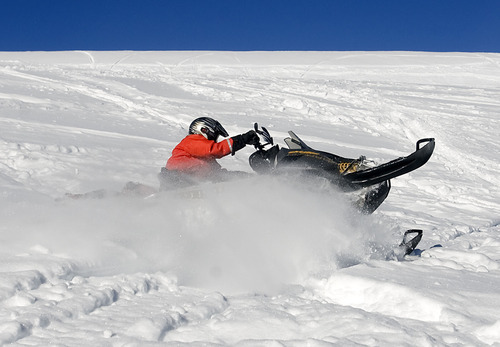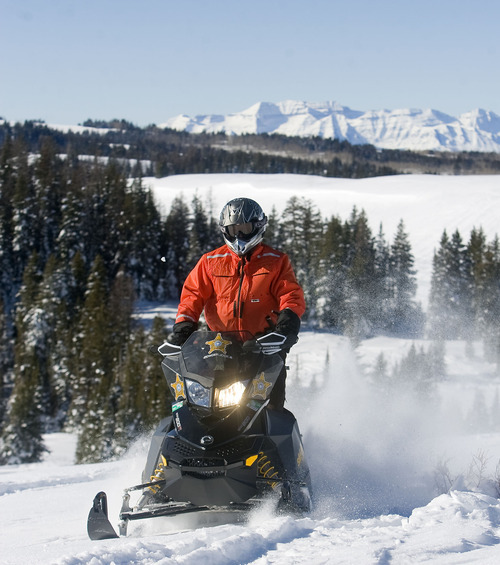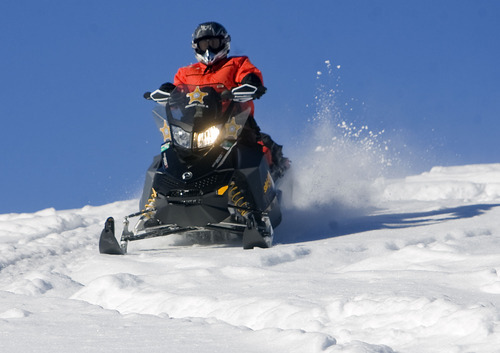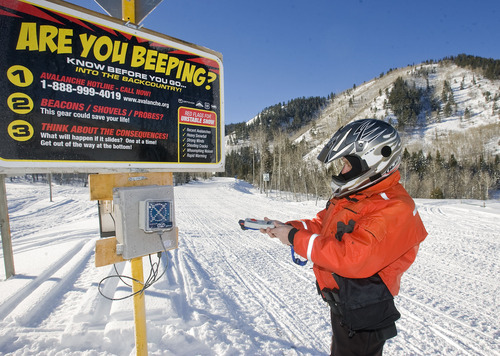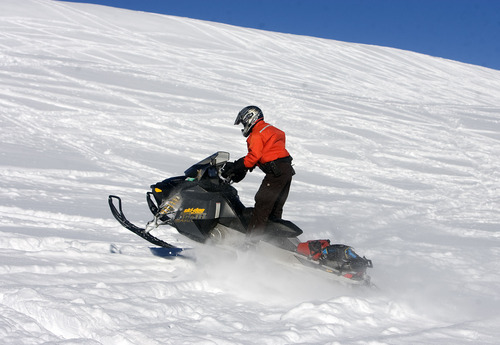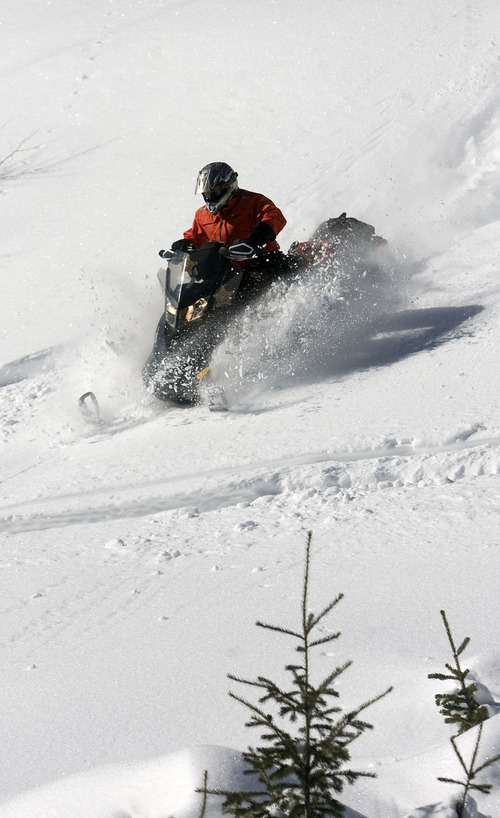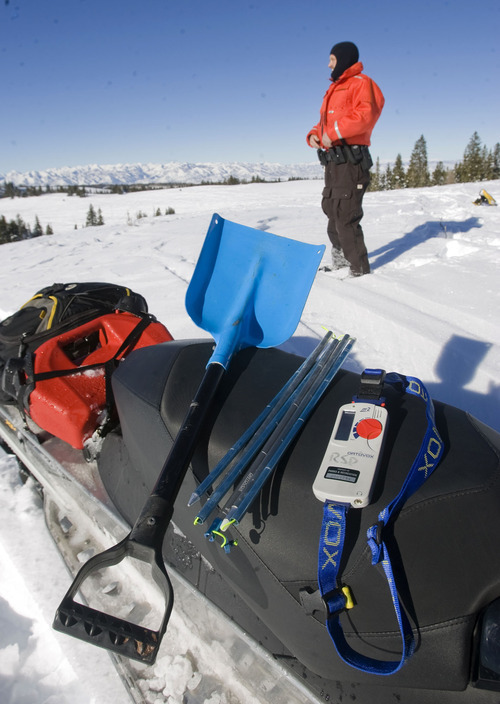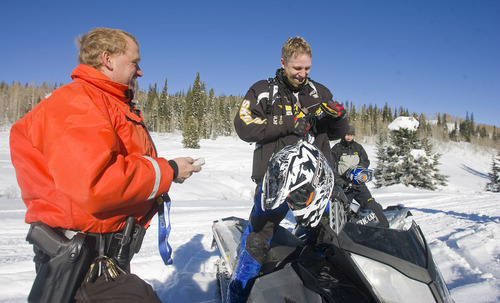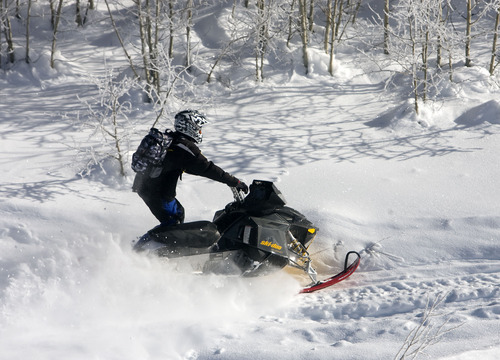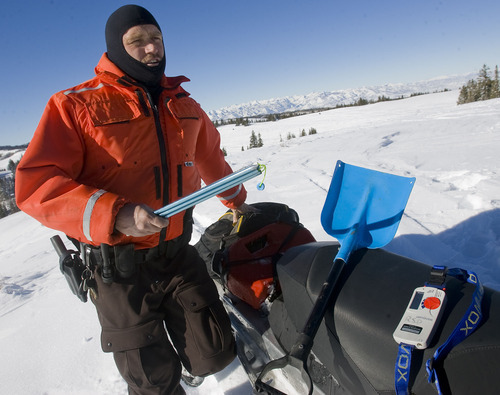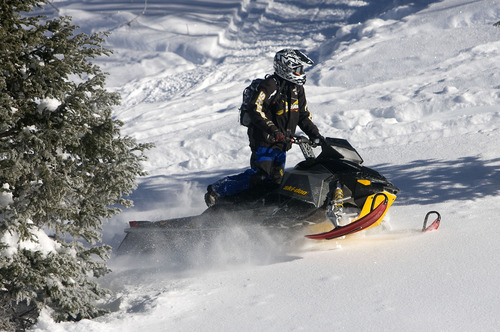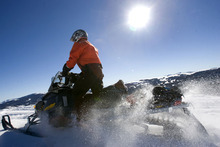This is an archived article that was published on sltrib.com in 2011, and information in the article may be outdated. It is provided only for personal research purposes and may not be reprinted.
Woodland • Technology is an amazing thing, but it can also have deadly consequences.
As experts have noticed with other mountain winter user groups, advances in technology always seem to be ahead of the avalanche learning curve.
"We have seen it through the years with climbers, skiers, snowboarders and now certainly with snowmobilers," said Craig Gordon, a forecaster with the Forest Service Utah Avalanche Center. "As gear gets better, no matter what we ride on the snow, we just don't have the avalanche skills to match our expertise with the given sport and the achieved technology."
Today's snowmobiles can take even beginner riders places many experienced sledders could only dream of riding a decade or so ago. As a result, snowmobilers are one of the most common victims of avalanches.
According to Gordon, 13 snowmobilers have died in Utah avalanches since the 2004-05 season. The most recent was a rider from Wyoming who died on Nov. 26 in the Uinta Mountains.
The lightweight and powerful machines not only take riders to places they should not go in certain situations, but they also take them there faster and to more.
"Snowmobilers cover a tremendous amount of terrain. Probably 100 times more terrain than a nonmotorized user," Gordon said. "A rider has got to be on their game paying attention to the changing aspects and elevations. Things can really change from one drainage to the other."
The remedy, it seems, for battling technology is good, old-fashioned common sense.
"When conditions are bad, you just avoid the places that are dangerous," said Mark Menlove, while enjoying a low avalanche threat day with his buddies in the Mill Hollow area above Woodland. "We have spent a lot of time in this area and we recognize when to stay away from certain areas. We have the entire backcountry and there are so many other places to go and have fun."
Gordon agrees.
"The beauty of snowmobiles is that on high slide day you can go out on a big flat meadow and have a ball," he said. "A backcountry skier or a snowboarder won't have very much fun on a flat."
Menlove's group of six all had safety equipment with them on the recent ride, but not everybody had the avalanche beacons turned on.
When asked if he would turn it on if the group ended up in a more avalanche-prone area, Robert Burton said, "Nope. I just wouldn't go there."
But not everybody understand the risks of riding snowmobiles in avalanche country.
For those people, the Utah Avalanche Center offers vital information on its website — utahavalanchecenter.org — and even at some trailheads.
The Nobletts snowmobile trailhead at the western gate on Highway 35 above Woodland includes an "Are You Beeping?" beacon tester on the side of the trail that reminds riders to turn on their beacons or lets them know if the equipment is working without even having to get of the sled. For a look at how it works, visit tinyurl.com/27cwgga.
Also at the Nobletts is the opportunity to practice finding a buried beacon at the Beacon Basin. The last thing you want when a buddy is buried, hopefully alive, is to try to figure out how to operate the one thing that could save his life.
There are other beacon testing fields at the Bear River Trailhead in the western Uintas, and on the top of Fairview Canyon on the Skyline Drive. Several ski resorts, including Snowbird, Solitude, Snowbasin and Canyons, also have the beacon work fields.
Avalanches, of course, are not the only dangers associated with snowmobiling. Utah State Parks ranger Joe Donnell gets called out on a frequent basis for search and rescue missions.
He says unseen hazards are the main cause of most snowmobile accidents involving injuries and deaths.
"I'd say 90 percent come from hitting a tree, rock, stump or ravine — something the rider did not anticipate," Donnell said. "The machine comes to a sudden stop and the impact of the person hitting the machine or flying off and hitting something else is where the injuries happen."
Donnell said there have already been one fatality and at least one serious incident a requiring Life Flight helicopter call in the Mill Hollow this winter. He said Utah State Parks, which handles snowmobile grooming in Utah, is typically called out 20 to 30 times each winter to help with injured riders in the Mill Hollow area.
He advises riders to scout a play area at a slower speed before hitting the throttle and turning tricks.
"When there is cloud cover, it can create a whiteout situation where you have no depth perception and everything looks totally flat," he said. "You can be flying across an area at full speed and not realize there is a dip or a ravine that could be 10 feet wide by 10 feet deep ahead. We've lost many snowmobilers that way."
Utah's Snowmobile Safety Week
Jan. 16-22
Utah Snowmobile Links
Snowmobile Education/Safety • stateparks.utah.gov
Utah Avalanche Center • utahavalanchecenter.org
Snowmobile Trail Conditions • snowut.org/groomingreports.htm
The nine snowmobile complexes managed by Utah State Parks:
Hardware Ranch/Logan Canyon/Monte Cristo
Wasatch Mountain
Mill Hollow/Mirror Lake
Uintah Basin
Nebo Loop/Scofield/Skyline
Ephraim/Manti/Mayfield/Skyline South
Fishlake/Monroe Mountain/Three Creeks/Junction
Cedar Mountain/East Fork
Strawberry
Snowmobiling safety tips from Utah State Parks
Never ride alone. Always ride with a companion and let others know your plan.
Check weather reports and avalanche advisories at utahavalanchecenter.org. Be prepared by wearing an avalanche beacon, and carrying a shovel and probe.
Dress for changing weather conditions. Wear layered clothing to adjust for changing conditions.
Know basic maintenance procedures. Carry spark plugs, drive belts, a tool kit and a survival kit that contains a map, compass, flashlight, extra food, extra clothing, sunglasses, first-aid kit, pocket knife, waterproof matches, and candles or fire starters.


